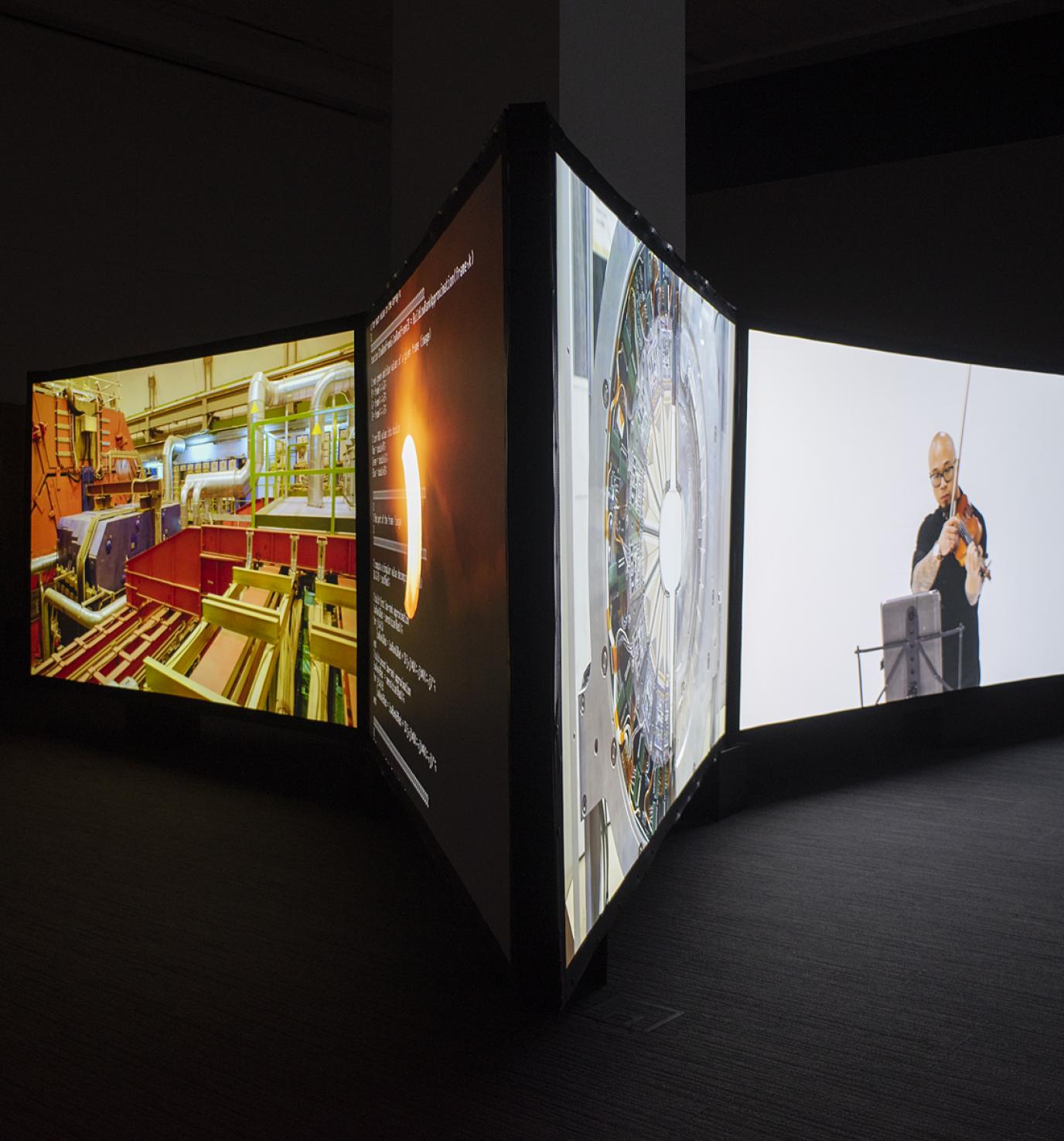
Science and Technology
Technological innovation has always been a driving factor for human societies, but its influence has increased with the rise of capitalism and globalization during the last few centuries. Science and technology can provide great benefits, such as eradicating diseases and exploring space, while simultaneously wielding destructive power. ARI’s inquiries into physical science and technology seek to better understand and visualize technologies that have shaped our collective past and shared present and will be the building blocks of the not-so-distant future.
Blockchain commission
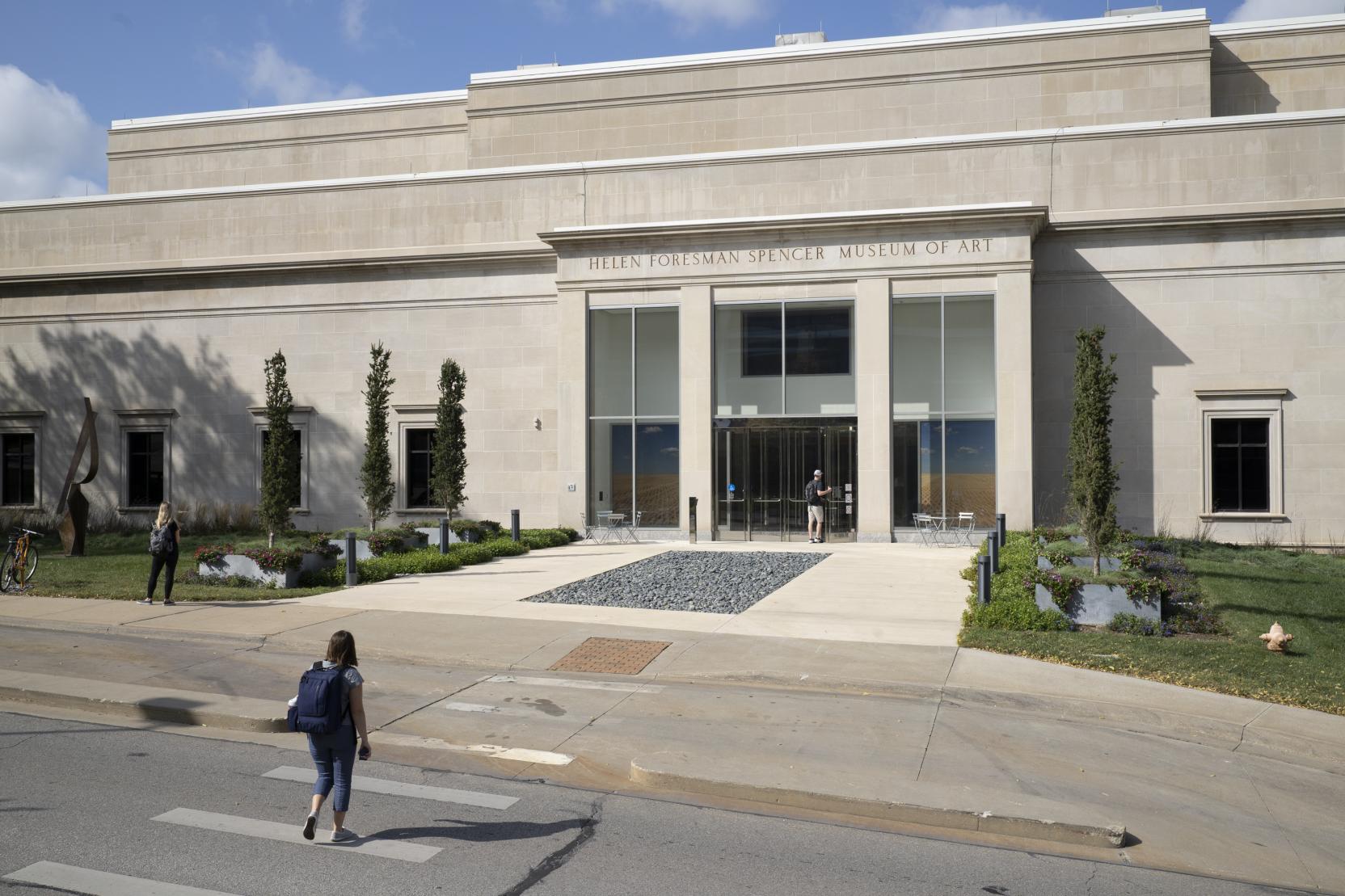
2020-present
The blockchain and the metaverse are two technologies with the potential to profoundly transform the economy and virtual reality. ARI commissioned artists Simon Denny and Stephanie Dinkins and Professor Perry Alexander to collaborate on a blockchain project to be featured in a future exhibition. Together they identified a real estate property “irl” (in real life) and purchased the corresponding property in the metaverse. The property is the Sandy Ground Historical Society in Staten Island, where Dinkins grew up. It is the oldest free Black settlement in the United States with the descendants of the founding settlers still living in the community and served as a stop on the underground railroad.
Stephanie Dinkins, Black Writing
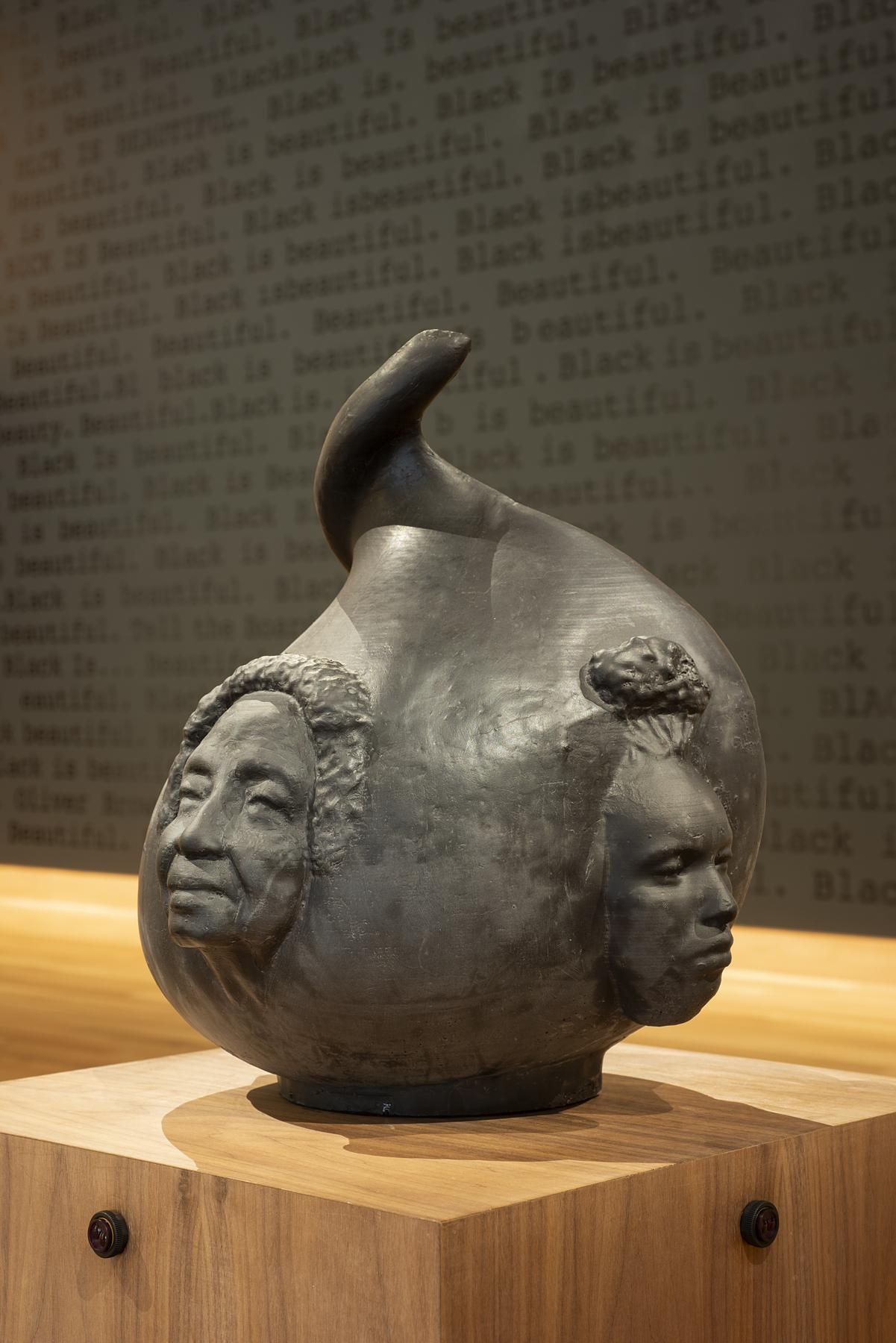
Stephanie Dinkins, Not The Only One V1. Beta (N'TOO), 2018
2023
Using interviews of herself, her aunt, and her niece, artist Stephanie Dinkins created a multigenerational memoir of a Black American family using artificial intelligence (AI). Not the Only One (N’TOO) is a voice-interactive AI with motion detectors that allows visitors to ask it questions and engage in conversation. N’TOO is built on a small data set to avoid cultural bias, which means it doesn’t always respond. The work was featured in the Spencer’s exhibition Black Writing, which celebrated the 40th anniversary of the History of Black Writing, a research project that specializes in the recovery and preservation of texts by Black writers.
Selected publications and media
- Art Papers, Stephanie Dinkins and Joey Orr interview, "Stephanie Dinkins: Building Something Now"
Collective Entanglements
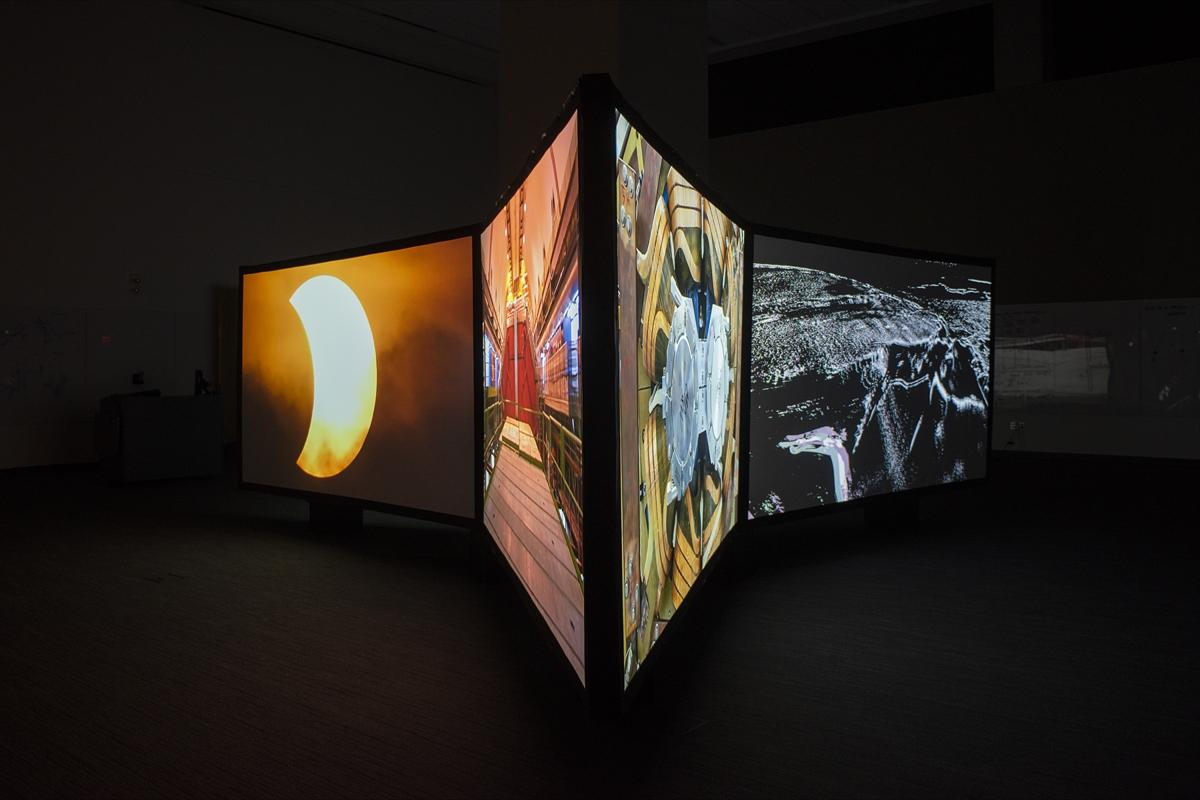
2020–2022
In the physical sciences, “entanglement” refers to sets of data that cannot be described independently of one another. In a more general sense, it refers to a complicated relationship or complex situation. It can be useful in describing interdisciplinary inquiry as well. Artist Janet Biggs, mathematician Agnieszka Międlar, and physicist Daniel Tapia Takaki collaborated on a project that used time-based media to explore questions in high-energy physics and applied novel mathematical techniques to the production of video and performance.
Selected publications and media
- SIAM News, "Integrating Mathematics, Physics, and Art Through Collective Entanglements"
- CERN Interview, “Cross-culture collaboration at CERN and the Spencer Museum”
- a2ru panel, “Work in Progress: A Ground Works Panel Discussion on Art-Science Collaboration”
- Singular Value Decomposition: Performance with Janet Biggs | Segment (YouTube)
Assaf Evron, knowledges
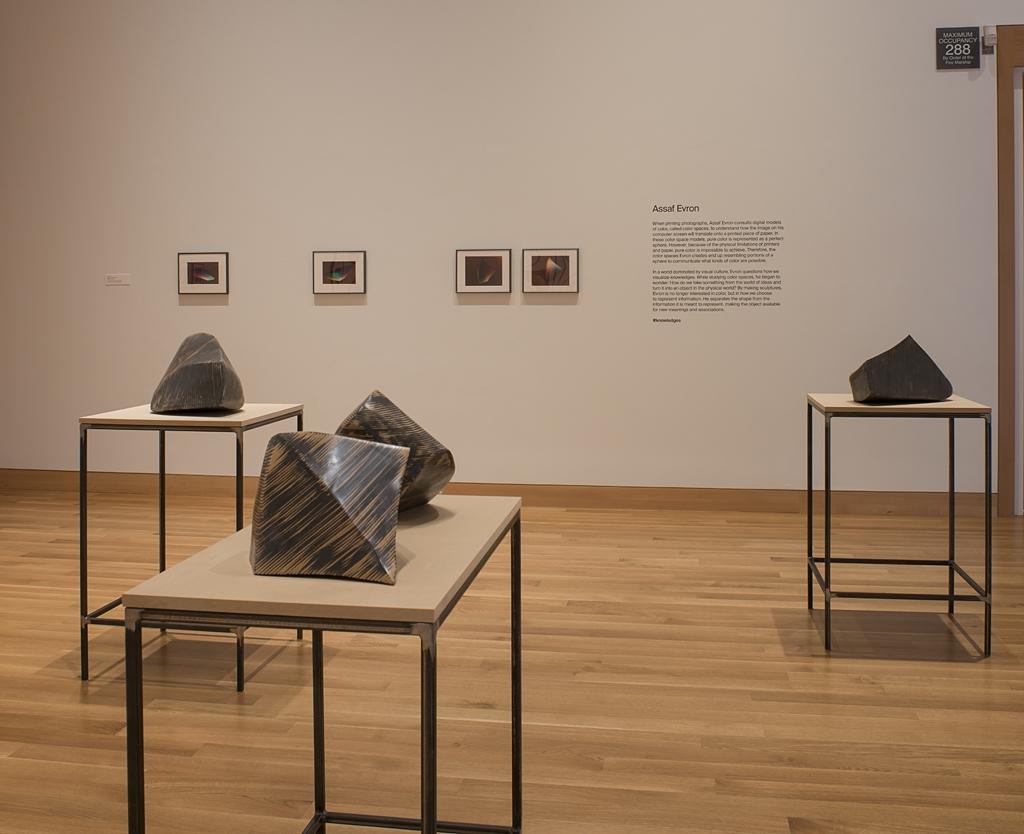
2019
Artist Assaf Evron makes abstract representations of colors that live in the digital world into physical objects. Because data visualization is a human invention, Evron’s work questions why some shapes and forms are recognizable and meaningful and how, displaced from their original context, these shapes take on new meaning. For the exhibition knowledges, Evron paired digitized color space models with sculptural objects based on those models to better visualize how color is represented spatially.
Selected publications and media
- knowledges | artist-in-residence Assaf Evron (YouTube)
- Kansas Alumni magazine, “The Art of Science (and Vice Versa)”